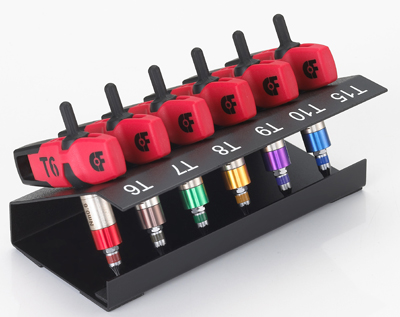Preset-Torque T Handles and Screwdrivers
Preset-Torque T Handles and Screwdrivers
SLOKY USA offers preset-torque T handles and screwdrivers for Torx and Torx-Plus screws for precision tightening of carbide inserts used in milling, turning, drilling, boring, threading and thread milling applications.

SLOKY USA offers preset-torque T handles and screwdrivers for Torx and Torx-Plus screws for precision tightening of carbide inserts used in milling, turning, drilling, boring, threading and thread milling applications. The torque values correspond to standards established by the major carbide producers. The range is from series 6 to 25.
A color-coded system makes it operator friendly and easy to use. Affordable pricing and a high level of quality allows many shops to take advantage of the benefits of properly tightened inserts.





